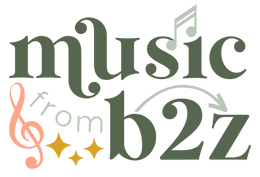
Let’s be honest: teaching strong vs. weak beats feels like one of those “oh they’ll totally get this” concepts... until they absolutely don’t. You blink, it’s January, and your second graders still think beat and rhythm are interchangeable and don’t understand why they can’t just clap on every word of the song.
Spoiler: if they don’t feel strong and weak beats in their bodies early on, meter in 3rd grade is gonna be rough. Trust me, I’ve been there — it’s not cute.
Listen First, THEN Make it a Thing
Start simple. No talk of "meter" just yet. Just play a steady beat on a drum (or boomwhacker, or literally your desk because teacher life). But here’s the trick: emphasize that strong beat like you’re trying to wake up the class down the hall.
Start with sets of 2, 3, and 4 — just clear, obvious patterns. Tell kids to raise their hand when they hear the strongest beat. And yeah, the first round is chaos. But then you do it again. And again. Then, throw in a “close your eyes” round and suddenly they’re like “Wait… I felt it???”
Cue the most magical teacher moment: when they realize they can feel something musical without needing to see it.

Say the Patterns Out Loud
We don’t gatekeep meter around here. Break it down:
-
Pattern of 2: STRONG weak
-
Pattern of 3: STRONG weak weak
-
Pattern of 4: STRONG weak weak weak
Say it with them. Say it like a chant. Say it with a rhythm. Say it so many times your students start saying it in their sleep. Repetition is your bestie.
Play-Dough + Beats = Unexpected Magic
Here’s where it gets fun: grab some rhythm mats (or whiteboards, or laminated anything). I tap a beat pattern, and they use dough balls to show what they hear. Strong beat? Bigger dough ball. Different color. Something noticeable so they can see the difference in the beats.
It’s simple, but it works every single time. Even my squirrel-brained classes settle into it — probably because they’re squishing something while also focusing on sound. 10/10 recommend for your sanity.

Why This Works (And Why You'll Keep Coming Back to It)
Listen. Teaching meter is one of those “must-dos” that can so easily turn into a hot mess if we try to rush it or skip steps. This kind of lesson:
✔️ Needs almost no prep
✔️ Works for literally any grade (I’ve done it with K-5)
✔️ Helps you sneak in assessment without a clipboard and panic
✔️ Is engaging enough that YOU might actually enjoy teaching it
Honestly? It’s one of those “ahhhh okay, this makes sense” lessons for the kids. And when they finally hear the difference between meters of 2 and 3? Chef’s kiss.
🖥 Ready to Teach Meter Without Losing Your Mind?
Once your kiddos have a solid grip on strong and weak beats, it’s time to take it to the next level — like actually putting it all together with time signatures (yes, even with littles — I swear it’s possible).
This free digital game helps your students practice identifying meter in real music — we’re talking 2/4, 3/4, and 4/4 — by looking at a few measures and deciding what they’re hearing and seeing. It works great on a SmartBoard, iPad, or any device that connects you to sanity and structure during your lesson.
👉 Click here or on the picture below to grab the free game! Give your students a chance to feel and understand meter — no prep, no stress, and zero blank stares.


